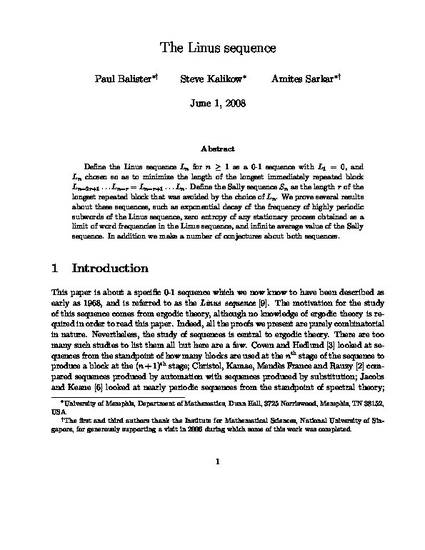
Article
The Linus Sequence
Combinatorics Probability & Computing
Document Type
Article
Publication Date
1-1-2010
Disciplines
Abstract
Define the Linus sequence Ln for n ≥ 1 as a 0–1 sequence with L1 = 0, and Ln chosen so as to minimize the length of the longest immediately repeated block Ln−2r+1 Ln−r = Ln−r+1 Ln. Define the Sally sequence Sn as the length r of the longest repeated block that was avoided by the choice of Ln. We prove several results about these sequences, such as exponential decay of the frequency of highly periodic subwords of the Linus sequence, zero entropy of any stationary process obtained as a limit of word frequencies in the Linus sequence and infinite average value of the Sally sequence. In addition we make a number of conjectures about both sequences.
DOI
http://dx.doi.org/10.1017/S0963548309990198
Subjects - Topical (LCSH)
Sequences (Mathematics); Ergodic theory
Genre/Form
articles
Type
Text
Rights
Copying of this document in whole or in part is allowable only for scholarly purposes. It is understood, however, that any copying or publication of this document for commercial purposes, or for financial gain, shall not be allowed without the author’s written permission.
Language
English
Format
application/pdf
Citation Information
Paul Balister, Steven Kalikow and Amites Sarkar. "The Linus Sequence" Combinatorics Probability & Computing Vol. 19 Iss. 1 (2010) p. 21 - 46 Available at: http://works.bepress.com/amites_sarkar/2/
